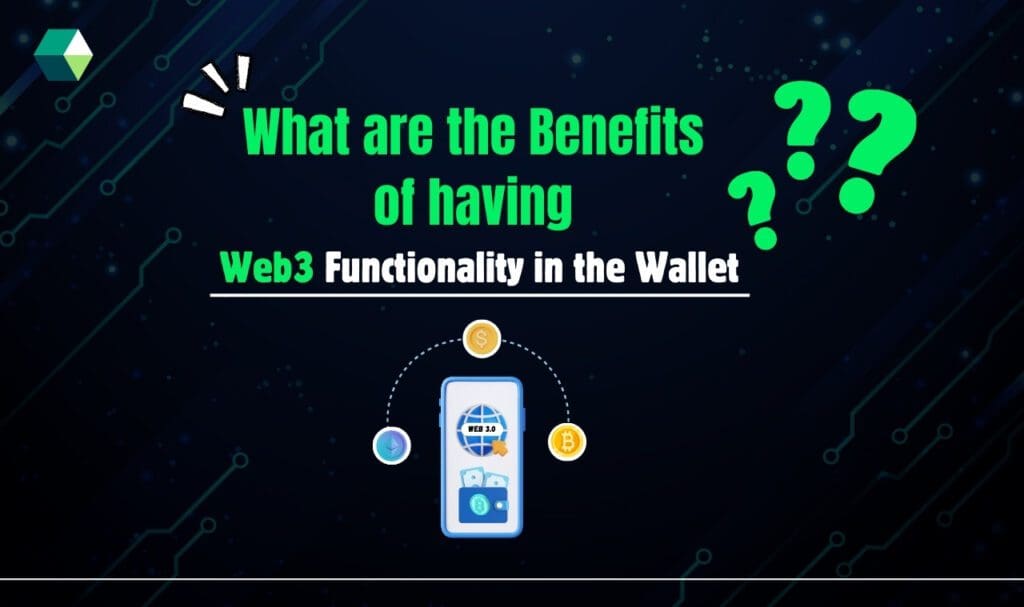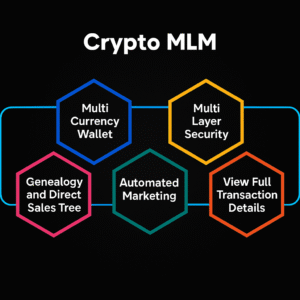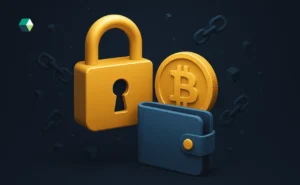
In the rapidly evolving landscape of decentralized finance (DeFi) and blockchain technology, Web3 functionality in wallets has emerged as a pivotal advancement. This transformation extends beyond traditional wallets, paving the way for a more secure, decentralized, and user-centric financial ecosystem. Web3 functionality in wallets is not just a technological upgrade; it represents a paradigm shift towards a decentralized internet where users have control over their data and financial transactions. This blog explores the myriad benefits of integrating Web3 functionality into wallets, focusing on DeFi Wallet Development and its implications for the future of finance.
Introduction to Web3 and DeFi Wallet Development
Before delving into the benefits, it’s crucial to understand what Web3 is and how it differs from the traditional Web2 model. Web3 refers to the third generation of internet services, where applications and services are decentralized and built on blockchain technology. Unlike Web2, which relies on centralized servers and intermediaries, Web3 applications run on peer-to-peer networks, ensuring greater transparency, security, and user control.
DeFi wallet development is an integral part of the Web3 ecosystem. These wallets are designed to interact seamlessly with Decentralized Applications (DApps) and protocols, enabling users to engage in a wide range of financial activities such as trading, lending, borrowing, and staking without relying on traditional financial institutions.
Enhanced Security and Privacy
One of the most significant benefits of Web3 functionality in wallets is the enhanced security and privacy it offers. Traditional financial systems and Web2 applications are prone to security breaches, data theft, and unauthorized access. In contrast, Web3 wallets leverage blockchain technology’s cryptographic principles to secure transactions and user data. Additionally, web3 crypto wallet play a crucial role in the Token Economy , enabling users to seamlessly manage, store, and interact with a wide range of digital assets in a decentralized manner.
-
Decentralized Architecture
Web3 wallets operate on a decentralized network, eliminating the single point of failure associated with centralized systems. This reduces the risk of hacks and data breaches.
-
Private Key Control
Users have complete control over their private keys, ensuring that only they can authorize transactions. This self-custody model eliminates the need to trust third-party custodians.
-
Anonymity and Privacy
Web3 wallets allow users to interact with DApps and perform transactions without revealing their personal information, preserving their privacy.
Financial Inclusion and Accessibility
Web3 functionality in wallets significantly enhances financial inclusion and accessibility by providing users with decentralized financial services that are not bound by geographical or economic constraints.
-
Permissionless Access
Web3 wallets enable users to access DeFi services without needing approval from traditional financial institutions or intermediaries. This democratizes access to financial services, particularly for unbanked and underbanked populations.
-
Lower Transaction Costs
By eliminating intermediaries, Web3 wallets reduce transaction costs, making financial services more affordable and accessible to a broader audience.
-
Global Reach
Web3 wallets allow users to transact and interact with DeFi services globally, without being restricted by national borders or local regulations.
Transparency and Trustlessness
Transparency and trustlessness are core principles of Web3 and defi wallet development. These attributes enhance the integrity of financial transactions and reduce the need for trust in centralized entities.
-
Immutable Records
Transactions conducted through Web3 wallets are recorded on the blockchain, creating an immutable and transparent ledger. This ensures that all transactions are verifiable and cannot be altered or tampered with.
-
Smart Contracts
Web3 wallets interact with smart contracts, which are self-executing contracts with the terms of the agreement directly written into code. Smart contracts automate and enforce agreements without the need for intermediaries, ensuring trustless and transparent transactions.
-
Open Source Development
Many Web3 wallets and DeFi protocols are developed as open-source projects, allowing the community to audit and verify the code. This fosters greater transparency and trust in the system.
Enhanced User Experience and Control
Web3 functionality in wallets is designed to provide users with a superior experience and greater control over their financial activities. This is achieved through user-friendly interfaces, advanced features, and customizable options.
-
Intuitive Interfaces
Modern Web3 wallets feature intuitive and user-friendly interfaces, making it easy for users to navigate and perform transactions.
-
Customizable Features
Users can customize their Web3 wallets to suit their preferences, such as setting transaction fees, managing multiple accounts, and integrating with preferred DApps.
-
Enhanced Control
Web3 wallets empower users with full control over their assets and transactions. Users can set their security preferences, authorize transactions, and manage their portfolios without relying on third parties.
Future-Proofing Financial Services
Integrating Web3 functionality into wallets is a forward-looking approach that future-proofs financial services in an increasingly digital and decentralized world. As blockchain technology continues to evolve, Web3 wallets are well-positioned to adapt and incorporate new innovations.
-
Scalability Solutions
Web3 wallets are at the forefront of adopting scalability solutions such as layer 2 protocols, which enhance transaction throughput and reduce costs, making DeFi services more efficient and accessible.
-
Interoperability Protocols
Web3 wallets are poised to benefit from emerging interoperability protocols that enable seamless communication and asset transfers between different blockchain networks.
-
Continuous Innovation
The decentralized nature of Web3 encourages continuous innovation and development. Web3 wallets are constantly evolving to incorporate new features, security enhancements, and user-centric improvements.
As the blockchain landscape continues to evolve, Web3 Crypto Wallets will play an increasingly critical role in shaping the future of finance. Powered by advancements in web3 development, these wallets empower users with greater control, security, and access to a wide range of decentralized services. Web3 wallets are not just a technological innovation but a catalyst for financial democratization and empowerment. Embracing Web3 functionality in wallet development is not just about staying ahead of the curve; it’s about redefining the very foundations of financial interaction and creating a more decentralized and user-centric financial world.
Author Profile
Vartika Krishnani works at Nadcab Labs, helping businesses thrive online through effective SEO strategies that ensure they stand out on the internet. At Nadcab Labs, our mission is to drive business growth using cutting-edge technologies like blockchain and smart digital marketing.







